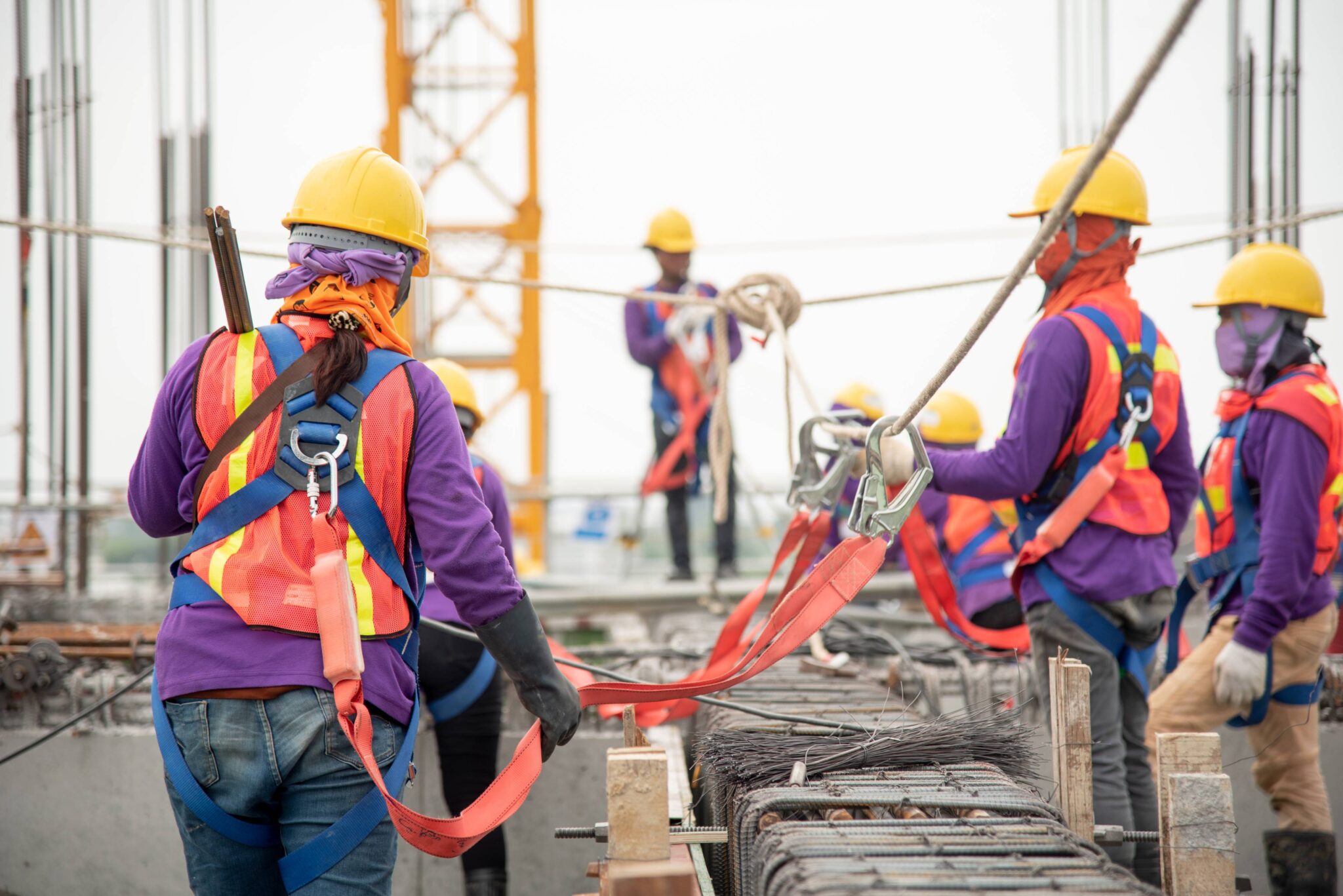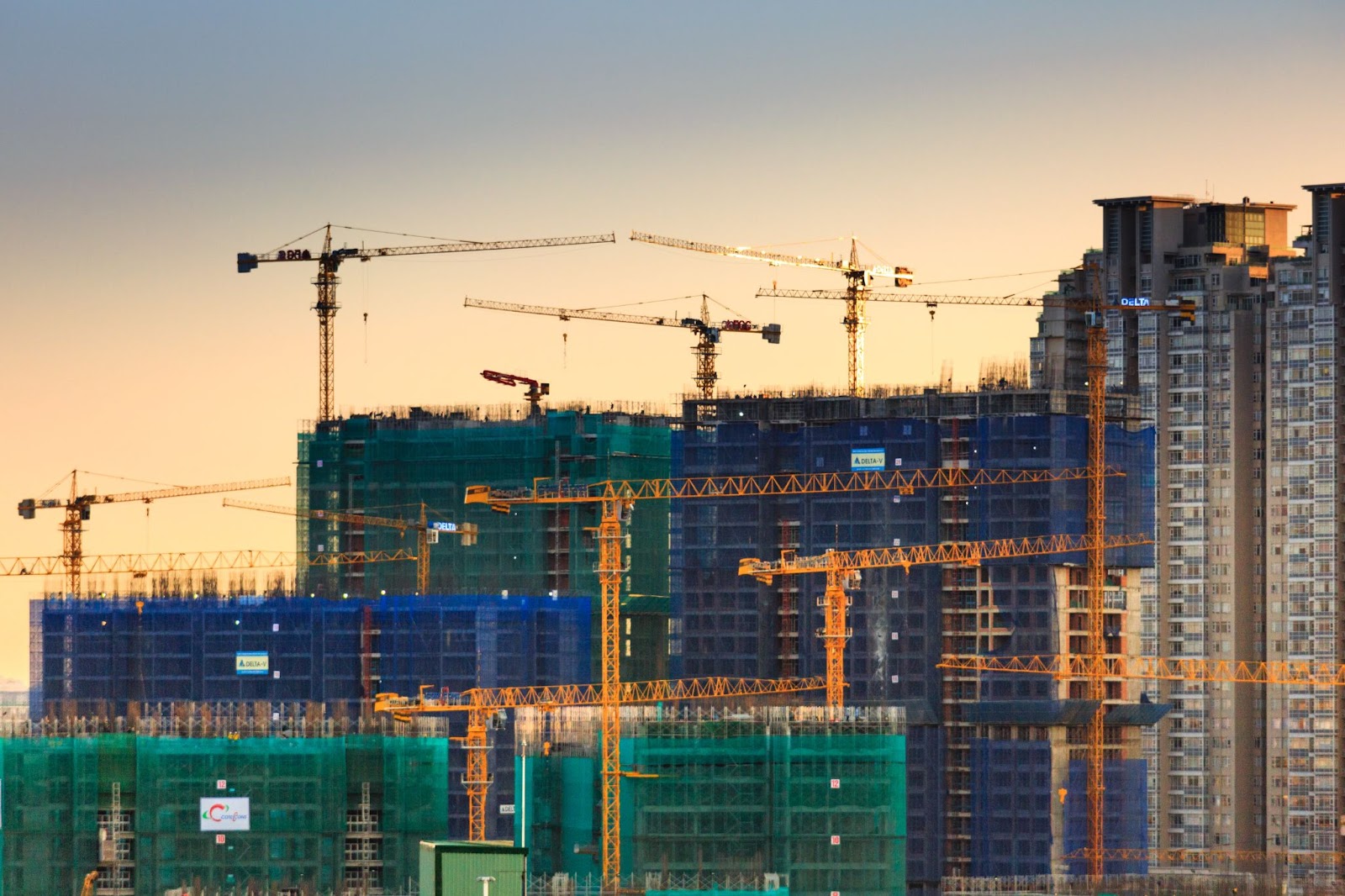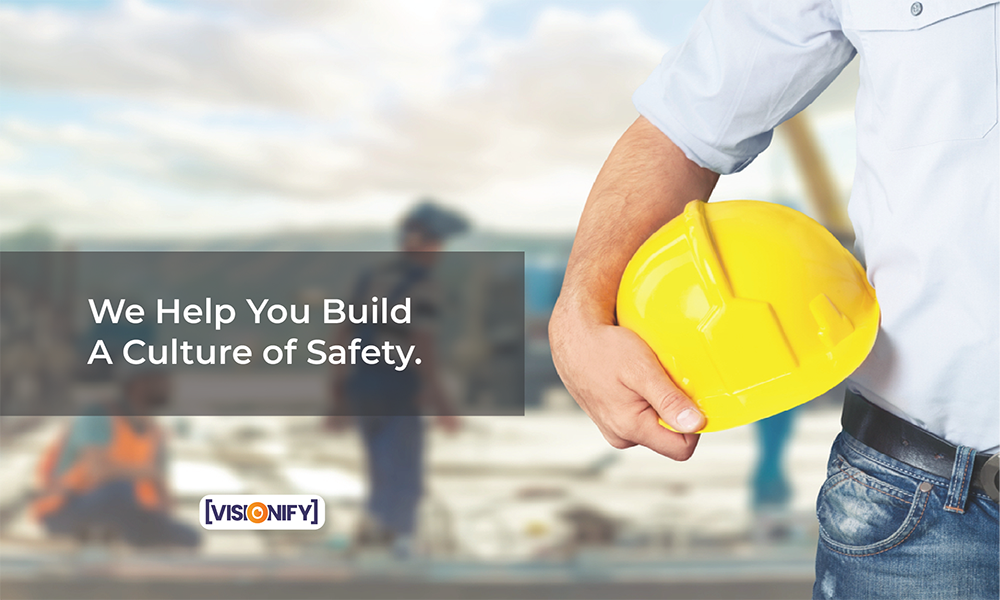Ensuring Safety at Heights: Essential Tips for Working at Heights

See It In Action

Safety AI Software in Action
See how Visionify's Safety AI Software monitors workplace safety in real-time
Example Videos
Safety AI Software in Action
See how Visionify's Safety AI Software monitors workplace safety in real-time
Forklift Zone Monitoring with Vision AI
See how Vision AI monitors forklift zones in real-time to prevent accidents
Hard Hat Compliance in Manufacturing
Vision AI PPE Compliance for Manufacturing
Key Takeaways
- Comprehensive Risk Assessment: Identifying and mitigating height-related hazards before work begins
- Proper Equipment Selection: Choosing and maintaining appropriate fall protection systems
- Thorough Training: Ensuring workers understand height safety protocols and equipment usage
- Environmental Awareness: Recognizing how weather and surroundings affect height safety
- Technological Enhancement: Leveraging Vision AI to monitor compliance and detect potential falls
Understanding Working at Heights
Working at height refers to any work performed where a person could fall a distance capable of causing injury. This includes obvious scenarios like roofing and scaffolding work, but also encompasses less apparent situations such as working near floor openings or using ladders for routine maintenance.
According to OSHA guidelines, work performed at elevations of four feet or higher in general industry settings is officially considered "working at height" and requires specific safety measures. However, safety precautions should be implemented regardless of specific height thresholds, as falls from even relatively low elevations can cause serious injuries.
 Proper fall protection equipment is essential when working on scaffolding
Proper fall protection equipment is essential when working on scaffolding
The Gravity of Height-Related Hazards
Working at heights presents several significant hazards that require careful management:
1. Fall Risks
The most obvious danger is the potential for falls, which can result in severe injuries or fatalities. Falls remain one of the leading causes of workplace fatalities across industries.
2. Unstable Working Surfaces
Many elevated work areas present challenges related to stability. Sloped roofs, temporary platforms, and weather-affected surfaces can increase fall risks substantially.
3. Falling Objects
Tools, materials, or equipment dropped from height can cause serious injuries to workers or bystanders below. Even small objects can become deadly when falling from significant heights.
4. Weather Exposure
Workers at height often face greater exposure to weather conditions like wind, rain, and extreme temperatures, which can affect both physical capabilities and equipment functionality.
5. Access Challenges
Emergency response and evacuation become more complicated at height, potentially delaying critical medical attention in case of an incident.
Essential Safety Tips for Working at Heights
1. Conduct Thorough Risk Assessments
Before any work at height begins:
- Evaluate whether working at height is absolutely necessary
- Identify all potential fall hazards in the work area
- Assess environmental factors like weather conditions and surface stability
- Determine appropriate control measures for each identified risk
- Document the assessment and share findings with all involved workers
Risk assessments should be updated whenever conditions change or new hazards are identified.
2. Select and Use Proper Fall Protection Systems
Fall protection generally falls into three categories:
Guardrail Systems: Physical barriers that prevent falls from edges, openings, or elevated surfaces.
Safety Net Systems: Nets installed below work areas to catch workers in case of a fall.
Personal Fall Arrest Systems (PFAS): Individual protection that includes:
- Full-body harnesses that distribute fall forces across the body
- Connectors like lanyards or self-retracting lifelines
- Secure anchor points capable of supporting at least 5,000 pounds per attached worker
The appropriate system depends on the specific work scenario, but in many cases, a combination of approaches provides the best protection.
3. Ensure Proper Equipment Maintenance and Inspection
All fall protection equipment requires regular inspection:
- Before each use, workers should visually inspect harnesses, lanyards, and other components for damage
- Check for fraying, cuts, burns, or chemical damage to webbing
- Inspect metal components for cracks, deformation, or corrosion
- Verify that moving parts operate smoothly
- Remove any damaged equipment from service immediately
Formal inspections by qualified personnel should be conducted at least annually, with records maintained of all inspections.
 Regular inspection of fall protection equipment is critical for safety
Regular inspection of fall protection equipment is critical for safety
4. Provide Comprehensive Training
Workers who operate at heights must receive thorough training on:
- Recognition of fall hazards in the work area
- Proper selection and use of fall protection systems
- Equipment inspection procedures
- Safe work practices specific to their tasks
- Emergency and rescue procedures
Training should include hands-on practice with actual equipment and be refreshed regularly to maintain awareness and skills.
5. Secure Tools and Materials
To prevent objects from falling:
- Use tool lanyards or tethering systems to connect tools to workers or structures
- Install toe boards on scaffolding and elevated platforms
- Utilize debris nets below work areas
- Establish controlled access zones below elevated work
- Never throw tools or materials between workers or levels
6. Follow Ladder Safety Guidelines
When using ladders:
- Select the appropriate ladder type and length for the task
- Inspect before each use for damage or defects
- Position on stable, level ground with proper angle (4:1 ratio)
- Extend at least 3 feet above the landing surface when accessing elevated areas
- Maintain three points of contact at all times
- Never stand on the top rung or step
- Face the ladder when ascending or descending
7. Practice Good Housekeeping
Maintain clean and organized work areas:
- Clear debris, tools, and materials from walking surfaces
- Clean up spills immediately to prevent slips
- Secure or remove loose items that could create tripping hazards
- Organize cords, hoses, and cables to minimize trip risks
- Maintain clear access to emergency exits and equipment
8. Monitor Weather Conditions
Weather significantly impacts height safety:
- Postpone work during high winds, heavy rain, or electrical storms
- Be aware of how temperature affects equipment and surfaces
- Adjust work schedules to avoid extreme weather when possible
- Provide appropriate clothing and protection for environmental conditions
- Reassess risks when weather changes during work
Enhancing Height Safety with Vision AI Technology
While traditional safety measures remain essential, modern technology offers powerful tools to enhance protection for workers at height. Vision AI (Computer Vision) represents a significant advancement in safety monitoring capabilities.
How Vision AI Transforms Height Safety
Vision AI systems use artificial intelligence to analyze video feeds from standard security cameras, identifying safety concerns in real-time:
Continuous Compliance Monitoring: The system can detect when workers are not properly connected to fall protection systems or are working without required PPE.
Restricted Zone Enforcement: Vision AI can identify when workers enter areas that require specific fall protection measures and verify compliance.
Unsafe Behavior Detection: The technology can recognize risky behaviors such as improper ladder usage, overreaching, or working too close to unprotected edges.
Fall Detection: In the event of a fall, Vision AI can immediately alert emergency responders, potentially reducing response time for critical injuries.
Pattern Recognition: Over time, these systems collect valuable data that reveals safety trends and helps organizations focus their improvement efforts.
 Vision AI systems can monitor multiple workers and detect safety violations in real-time
Vision AI systems can monitor multiple workers and detect safety violations in real-time
Practical Applications in Various Industries
Vision AI is already enhancing height safety across multiple sectors:
Construction: Monitoring proper harness usage, ladder positioning, and edge protection on multi-story projects.
Maintenance: Ensuring technicians follow safety protocols when accessing elevated equipment or structures.
Utilities: Verifying that lineworkers and tower climbers maintain proper tie-off points during elevated work.
Manufacturing: Monitoring safe practices when workers access elevated machinery or storage areas.
Implementing a Comprehensive Height Safety Program
The most effective approach combines traditional best practices with innovative technologies:
-
Develop Clear Policies: Create comprehensive height safety guidelines tailored to your specific operations.
-
Invest in Quality Equipment: Provide appropriate fall protection systems and ensure regular maintenance.
-
Train Thoroughly: Ensure all employees understand height safety protocols and their individual responsibilities.
-
Leverage Technology: Implement Vision AI and other safety technologies to enhance monitoring capabilities.
-
Foster a Safety Culture: Encourage reporting of near-misses and concerns without fear of reprisal.
-
Continuously Improve: Regularly review and refine safety practices based on incident data and emerging best practices.
Conclusion: Elevating Safety Standards
Working at heights presents significant risks, but with proper planning, equipment, training, and technological support, these risks can be effectively managed. By implementing the essential safety tips outlined in this article and exploring the potential of technologies like Vision AI, organizations can significantly reduce fall-related incidents while improving operational efficiency.
The investment in height safety pays dividends not only in reduced costs and improved productivity but also in the wellbeing and confidence of workers performing elevated tasks. In today's safety-conscious environment, organizations that prioritize comprehensive height safety programs demonstrate their commitment to worker protection while positioning themselves for operational excellence.
Ready to enhance height safety with Vision AI technology? Contact Visionify today to learn how our solutions can help monitor compliance, detect potential falls, and create a safer work environment for employees working at heights.
Frequently Asked Questions
Find answers to common questions about this topic
Want to learn more?
Discover how our Vision AI safety solutions can transform your workplace safety.
Schedule a DemoSchedule a Meeting
Book a personalized demo with our product specialists to see how our AI safety solutions can work for your business.
Choose a convenient time
Select from available slots in your timezone
30-minute consultation
Brief but comprehensive overview of our solutions
Meet our product experts
Get answers to your specific questions
Related Articles
Subscribe to our newsletter
Get the latest safety insights and updates delivered to your inbox.


